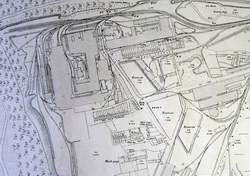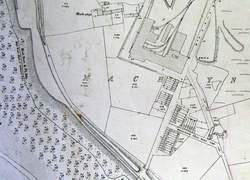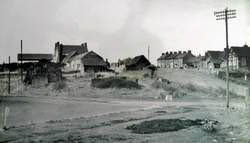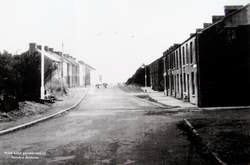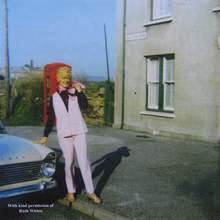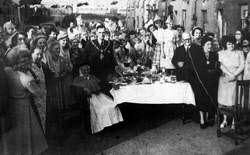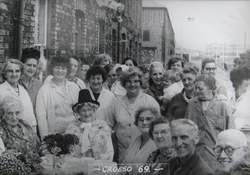Machynys in about 1920. The South Wales Works appears near the top left, Richard Thomas Mills at the top, and the Burry Works on the right.
Machynys Farm, Cliff Terrace, and Machynys School
Bwlch-
Springfield Terrace on the left, and Sea View Terrace on the right
Pauline Whitten in front of the public telephone
Celebrating the coronation of Queen Elizabeth II, 1953
Celebrating the investiture of the Prince of Wales, 1969
Jumble sale to raise money for the people of Biafra
On holiday in Blackpool
I am grateful to Nevil Williams and Sandra Jenkins for the photographs on this page
Many of the workers at the steel and tinplate works of Machynys would have lived
just outside the peninsula, often in New Dock Road to the north and adjoining streets.
But from an early date staff housing was also constructed very close to the works.
By 1897, when a Llanelli trade directory was published, the housing formed two distinct
communities, one known as Machynys, the other called Bwlch-
The community of Machynys lay to the east and south east of the South Wales Works. As you can see from the map on the left Bay View Terrace, Brick Row, and Cliff Terrace lay between the South Wales Works and Machynys Farm, while Maliphant Row, also known as Dock Row, ran to the east of the Works. The 1897 trade directory gives the name of all the householders occupying these houses. In Maliphant Row, for example, Joseph Green, tinplater, lived at number 1 and William Prosser Thomas, rollerman, at number 5. In Bay View Terrace Mrs Charles, widow, lived at number 7 and Mary Lewis, tinplate opener, lived at number 15. In 1897 the residents of Maliphant Row would have had a clear view to the north from their back gardens, but in 1910 the Richard Thomas Mills were opened very close to their boundaries.
The 1897 Llanelli trade directory, published by James Davies & Co, can be seen in the Llanelli public library.
Bwlch-
Machynys and Bwlch-
· The whine of a gantry.
· Railway trucks being coupled together.
· The hooters of the steel and tinplate works.
· Men and women walking to work and back.
· Children singing.
· Men talking loudly as they came home after pub closing time.
· Bill fruit and veg coming round every Saturday morning.
And if you lived near Machynys Farm:
· The lowing of cattle.
· The crowing of cocks at daybreak.
· The grunting of pigs.
People who have memories of Machynys and Bwlch-
Not many people had their own telephone. If you needed to ring someone in Bwlch-
